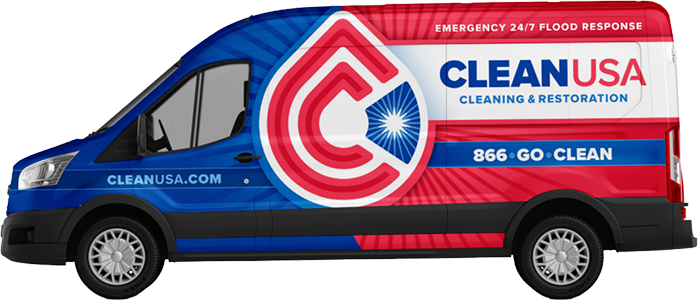Did you know that cleaning and maintaining a hygienic environment can significantly reduce the risk of infection and disease? However, when it comes to disinfecting and sanitizing, it’s important to understand the key differences between the two. These terms may seem interchangeable, but they have distinct purposes and outcomes.
Disinfecting and sanitizing are two processes commonly used to eliminate germs and create a safer environment. Let’s explore the nuances between these cleaning methods and why they are essential in maintaining optimal cleanliness and hygiene.
Key Takeaways:
- Disinfecting and sanitizing are distinct processes with different objectives.
- Disinfecting aims to eliminate almost all germs and pathogens.
- Sanitizing focuses on reducing the number of germs to a safe level.
- The choice between disinfecting and sanitizing depends on the level of germ elimination required.
- Both disinfecting and sanitizing are crucial for reducing the risk of infections and diseases.
Understanding the Basics of Germs
Germs, also known as microorganisms, are microscopic living organisms that can be harmful or beneficial to human health. They play a significant role in our daily lives and can exist in various environments, including the air, soil, water, and on surfaces.
Germs encompass a wide range of organisms, including bacteria, viruses, and fungi. Each type of germ has its own unique characteristics and can impact human health in different ways.
Bacteria are single-celled organisms that can exist in various shapes and sizes. Some bacteria are beneficial, aiding in digestion and nutrient absorption, while others can cause infections or diseases. Examples of bacteria include Streptococcus, Escherichia coli (E. coli), and Staphylococcus aureus.
Viruses, on the other hand, are smaller than bacteria and cannot survive or reproduce outside of a host cell. They rely on host cells to multiply and can cause infections in humans. Common viruses include influenza viruses, the common cold virus, and HIV.
Fungi are multi-cellular organisms that can exist as single-celled yeasts or as mold with fine, thread-like structures. While some fungi are beneficial, such as those used in the production of certain foods like bread and cheese, others can cause infections such as athlete’s foot or fungal nail infections.
Understanding the basics of germs is important in maintaining good hygiene practices and preventing the spread of infections. By knowing the types of germs that exist and how they can thrive in different environments, individuals can take appropriate measures to protect their health and well-being.
Defining Cleaning, Sanitizing, and Disinfecting
Cleaning, sanitizing, and disinfecting are three distinct processes used to maintain cleanliness and hygiene. Each process serves a specific purpose and targets different levels of germ elimination. Understanding the definitions and differences between these processes is crucial in establishing effective cleaning protocols.
What is Cleaning?
Cleaning is the first step in the process of maintaining a clean and hygienic environment. It involves removing dirt, debris, and visible contaminants from surfaces to make them visually clean. Cleaning typically involves the use of soap or detergent and water.
What is Sanitizing?
Sanitizing is the process of reducing the number of germs on surfaces to a safe level determined by public health standards. It aims to minimize the risk of infection by removing or killing certain types of pathogens. Sanitizing is usually achieved by using sanitizing agents such as sanitizing wipes, sprays, or solutions.
What is Disinfecting?
Disinfecting, on the other hand, is a more rigorous process that eliminates a broader range of germs, including bacteria, viruses, and fungi. It goes beyond sanitizing and ensures a higher level of germ elimination on surfaces. Disinfecting involves the use of disinfectants, which are specifically designed to kill or inactivate pathogens.
While cleaning, sanitizing, and disinfecting are distinct processes, they can be complementary and work together to create a hygienic environment. In situations where there is a higher risk of infection or when dealing with certain pathogens, it may be necessary to combine these processes for optimal cleanliness and hygiene.
What is the difference between disinfecting and sanitizing?
In the realm of cleanliness and hygiene, understanding the distinction between disinfecting and sanitizing is crucial. While both practices aim to eliminate germs and reduce the risk of infection, there are significant differences in their objectives and the level of germ elimination they strive to achieve.
Disinfecting refers to the process of using chemicals or heat to kill or inactivate a wide range of pathogens on surfaces. This includes bacteria, viruses, and fungi that can cause illness or disease. Disinfectants work by disrupting the structure and function of these microorganisms, rendering them harmless or unable to reproduce.
On the other hand, sanitizing focuses on reducing the number of germs on surfaces to a safe level determined by public health standards. Sanitizers are typically milder than disinfectants and are often used on food contact surfaces, such as kitchen counters and utensils, to remove or reduce surface contamination. While sanitizing does not aim to completely eradicate all pathogens, it significantly reduces their presence, minimizing the risk of spreading infections.
It is important to note that the efficacy of both disinfecting and sanitizing practices depends on several factors, such as contact time, concentration of the disinfectant or sanitizer, and the specific type of pathogen being targeted.
By understanding the difference between disinfecting and sanitizing, individuals and businesses can make informed decisions about the cleaning methods and products they choose. Whether it’s a healthcare facility striving for a sterile environment or a household aiming for a hygienic living space, selecting the appropriate approach based on the desired level of germ elimination is essential.
Everyday Germ Hotspots and How to Address Them
Everyday germ hotspots are common surfaces and areas that are frequently touched or used by multiple people, making them prime locations for germ transmission. These high-touch surfaces and common germ areas can harbor harmful bacteria and viruses, increasing the risk of infections and diseases.
To minimize the spread of germs, it is crucial to implement regular cleaning and hygiene practices. By following simple cleaning tips and adopting good hygiene practices, you can effectively address these everyday germ hotspots and create a safer environment for yourself and others.
- Clean and disinfect frequently touched surfaces: High-touch surfaces such as doorknobs, light switches, and countertops should be regularly cleaned and disinfected. Use an appropriate disinfectant to kill germs effectively and reduce the risk of cross-contamination.
- Pay attention to shared items: Items that are commonly shared among individuals, such as computer keyboards, telephones, and remote controls, can harbor germs. Clean and disinfect these items regularly, especially when used by multiple people.
- Practice proper hand hygiene: Wash your hands frequently with soap and water for at least 20 seconds, especially before eating, after using the restroom, and after touching high-touch surfaces. If soap and water are not readily available, use hand sanitizers with at least 60% alcohol content.
- Clean personal items: Items that come into close contact with your face, such as eyeglasses, smartphones, and earphones, should be cleaned regularly with suitable cleaning agents. Avoid sharing these personal items with others to minimize germ transmission.
- Keep communal areas clean: Areas such as kitchen counters, dining tables, and bathroom surfaces should be cleaned and disinfected regularly, particularly in shared spaces. Make it a habit to clean up after yourself and encourage others to do the same.
To effectively address everyday germ hotspots, consistency is key. Regular cleaning and hygiene practices should be followed to ensure a clean and safe environment. By adopting these cleaning tips and implementing proper hygiene practices, you can help reduce the risk of infections and create a healthier space for everyone.
The Proper Use of Disinfectants and Sanitizers
Proper use of disinfectants and sanitizers is essential for effective cleaning and maintaining a safe and hygienic environment. By following the guidelines below, you can ensure that you are using these products correctly and maximizing their effectiveness.
- Choose the right product: Different disinfectants and sanitizers are designed to target specific types of pathogens. It’s important to select the appropriate product based on the surfaces and areas you are cleaning. Read the labels carefully and choose disinfectants and sanitizers that are EPA-approved for the pathogens you are targeting.
- Read and follow the instructions: Each disinfectant and sanitizer will have specific instructions for use, including the recommended contact time and dilution ratio. It’s crucial to read and follow these instructions to ensure that you are using the product correctly. Avoid diluting the product more than recommended, as it can reduce its effectiveness.
- Pre-clean surfaces: Before applying disinfectants or sanitizers, it is important to pre-clean surfaces to remove any visible dirt, debris, or organic matter. This step helps the disinfectant or sanitizer to make direct contact with the pathogens and ensures better efficacy.
- Apply the product correctly: Follow the recommended technique for applying the disinfectant or sanitizer. This may include spraying, wiping, or soaking the surface, depending on the product and the area being treated. Ensure thorough coverage and allow sufficient contact time for the product to effectively kill the pathogens.
- Use proper safety precautions: When using disinfectants and sanitizers, it is essential to take safety precautions. Wear appropriate personal protective equipment (PPE), such as gloves and eye protection, to protect yourself from potential hazards. Ensure good ventilation in the area being treated.
By following these guidelines, you can ensure that you are using disinfectants and sanitizers effectively to maintain a clean and safe environment. Remember to always prioritize safety and follow the instructions provided by the manufacturer.
Commercial Cleaning Standards and Protocols
In order to maintain a clean and safe environment in various settings such as businesses, offices, schools, and healthcare facilities, it is essential to adhere to commercial cleaning standards and protocols. These standards provide guidelines and best practices for effective cleaning, ensuring optimal hygiene and reducing the risk of infections.
Commercial cleaning standards outline specific procedures and techniques for cleaning different types of surfaces, including floors, countertops, and high-touch areas. They also emphasize the use of appropriate cleaning solutions and tools to effectively remove dirt, dust, and germs.
Moreover, cleaning protocols establish a systematic approach to cleaning, specifying the frequency of cleaning tasks and the responsibilities of cleaning staff. These protocols ensure that cleaning is done consistently and thoroughly, leaving no room for oversight or negligence.
By following commercial cleaning standards and protocols, businesses and organizations can maintain a clean and healthy environment for their employees, customers, and visitors. This not only promotes overall hygiene, but also contributes to a positive and professional image.
Implementing proper hygiene guidelines and adhering to commercial cleaning standards also demonstrates a commitment to the well-being and safety of all individuals. It is important for businesses to prioritize cleanliness and follow industry best practices to prevent the spread of infections and create a healthy environment.
In summary, commercial cleaning standards and protocols play a crucial role in maintaining cleanliness, promoting hygiene, and reducing the risk of infections in various settings. By implementing these standards and guidelines, businesses can ensure a clean and safe environment for their employees and customers.
Why Cleaning, Sanitizing, and Disinfecting Matter
Cleaning, sanitizing, and disinfecting play a crucial role in maintaining cleanliness, promoting hygiene, and preventing the spread of infections and diseases. These practices are essential for creating a safe and healthy environment in various settings, including homes, workplaces, schools, and public spaces.
Importance of Cleaning:
Cleaning involves the removal of dirt, debris, and visible contaminants from surfaces. It helps create a visually pleasing environment and reduces the risk of infections. Regular cleaning removes allergens, dust, and pollutants, improving indoor air quality and promoting overall well-being.
Importance of Sanitizing:
Sanitizing focuses on reducing the number of microorganisms on surfaces to a safe level determined by public health standards. It is particularly important for high-touch areas and objects that come into contact with food or the skin. Sanitizing helps minimize the risk of foodborne illnesses, respiratory infections, and skin irritations.
Importance of Disinfecting:
Disinfecting goes a step further by killing or inactivating a broader range of microorganisms, including disease-causing pathogens. It is crucial for areas that require a higher level of infection control, such as healthcare facilities. Disinfecting helps prevent the spread of contagious diseases, including the flu, COVID-19, and other viral infections.
Hygiene Practices for Infection Control:
In addition to cleaning, sanitizing, and disinfecting, practicing good hygiene habits is vital for infection control. These practices include regular handwashing with soap and water for at least 20 seconds, using hand sanitizers with at least 60% alcohol when handwashing is not possible, covering the mouth and nose when coughing or sneezing, and avoiding close contact with sick individuals.
By implementing these cleaning, sanitizing, and disinfecting practices, individuals and organizations contribute to maintaining a healthy environment, reducing the risk of infections, and protecting the well-being of themselves and others.
Conclusion
In conclusion, maintaining cleanliness, promoting hygiene, and preventing the spread of infections and diseases are of utmost importance. Cleaning, sanitizing, and disinfecting are essential practices that individuals and businesses must prioritize to create and maintain a clean and healthy environment.
By understanding the differences between these processes, individuals and businesses can make informed decisions about when and how to implement them. Cleaning involves the removal of visible dirt and debris, while sanitizing reduces germs on surfaces to a safe level. Disinfecting, on the other hand, kills a broader range of pathogens. By combining these processes and following proper protocols, the risk of infections can be significantly reduced.
Hygiene practices such as regular handwashing, using hand sanitizers, and properly cleaning high-touch surfaces play a vital role in preventing the spread of diseases. Additionally, following commercial cleaning standards and protocols ensures a safe and hygienic environment in various settings, such as offices, schools, and healthcare facilities.
In summary, the importance of cleaning, sanitizing, and disinfecting cannot be understated. By implementing these practices and promoting proper hygiene, individuals and businesses can create a healthier environment for everyone.




